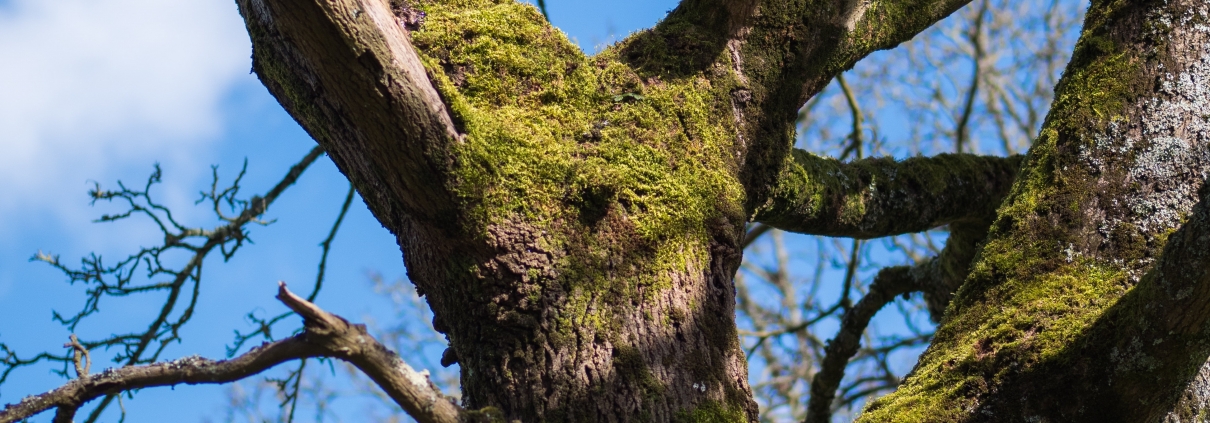Lichens as an Indicator of Air Quality
Indicator species are organisms that provide information on the condition of their environment. Lichens are one such example, and have been used by scientists for the purpose of determining the air quality in a given area. Read on to find out more.
What are lichens?
Lichens are organisms consisting of a symbiotic relationship between a fungus and a chlorophyll-containing partner, either algae or cyanobacteria. Fungi are incapable of photosynthesis as they do not possess chlorophyll, but algae and cyanobacteria do. By forming a symbiotic relationship, the fungus gains constant access to nourishment, and can thus thrive. Lichens are found in both nature and in human-made environments, including rocks, trees, barren earth, metal and concrete. They are sensitive to air pollution because they receive all nutrients from the atmosphere, which makes them valuable as indicator species. In particular, the two pollutants that mostly affect lichens are nitrogen (N) and sulfur dioxide (SO2).
How does nitrogen affect lichens?
Lichens need nitrogen to survive as it supports them to produce necessary proteins and organic acids. Additionally, cyanobacteria engage in what is called nitrogen fixation, where the element is converted to ammonia, a more stable and easier-to-use form. The nitrogen used by lichens can be gaseous (N2), or come in the form of nitric oxide (NO) or nitrogen dioxide (NO2). Certain lichen species are sensitive to ammonia, while others are not. Too much nitrogen can in fact over-fertilize certain lichen species and cause them to die. Excess nitrogen can also kill the chlorophyll of the alga, which deprives the fungi of the necessary sugars for survival.
How does sulfur dioxide affect lichens?
Lichens are sensitive to sulfur dioxide. The compound easily dissolves in water, which the organism can then absorb, and is prevalent in the air in its gaseous state as well. Sulfur dioxide interferes with the cyanobacteria’s ability to fix nitrogen, and destroys the chlorophyll of the alga, thus inhibiting photosynthesis. The compound also impedes lichen reproduction and spore germination across certain species.
How are lichens used to indicate air quality?
In the United States, the health of various lichen species are monitored and paired with atmospheric deposition data to identify critical sources and overall levels of air pollution. Atmospheric deposition is the process of gases and particles from the atmosphere being transferred to earth. In this case, scientists are looking at nitrogen deposition levels to protect sensitive ecological systems.
Lichens have also been used in Germany as a bioindicator for air pollution, as they are sensitive to a number of air pollutants. Specifically, lichens are the most sensitive to sulfur dioxide, but other acidic pollutant gases as well as heavy metals and photo oxidants. In Germany, two methods existed that used lichens as indicators: exposure of lichens and recording of lichen growth on trees under natural conditions. The recording of the trees follows a certain standard:
- Must have a minimum circumference of 60 cm
- Must be self-supporting
- Must not be shaded or only slightly shaded
It is also important to note that different lichen species have different sensitivities to air pollutants. Thus the variety in lichen species are taken into account when calculated and represented to the air quality index. This is done by determining the degree of cover and vitality.
The Dutch developed a method of classifying lichens: “nitrophyte” lichen species thrive in high-nitrogen environments and on tree bark with high pH, while “acidophyte” lichen species prefer the opposite. Bark pH has been found to be affected by sulfur dioxide concentrations. This method has been used to map and monitor nitrogen and ammonia pollution patterns across countries in Europe, and has also helped discover that lichens respond to global warming. The Dutch method should not be mixed up with the Ellenberg method, which uses „Ellenberg N Values“ that estimate the position along a productivity/macro-nutrient availability gradient at which a species reaches peak abundance. The method consists of an „Ellenberg N Index“ determined by allocating an N score to each plant species, so that the overall mean score for the community is on a scale of nutrient poor to nutrient rich, rated 1 to 10 respectively. This method is also suitable to indicate environmental impacts, as it has been used to indicate species change and colonization across time.
Lichens are also being used to monitor nitrogen levels at tea farms in Sri Lanka and the Himalayan forests. The growers use fertilizer that contains nitrogen in the form of ammonia, and as such are conducting research to see how the element would affect the ecology of the area.
What’s the best way to measure air quality?
While there is no doubt that lichens are certainly a useful indicator species, the information they provide is limited — they can only be used to monitor nitrogen and sulfur dioxide levels when in fact there are many more pollutants that serve as ecological and health threats. Moreover, indicator species are unable to give you immediate feedback of exact pollution levels, only averages over a longer period of time – similar to data you would be getting from a long-term passive collector. This makes sourcing, control, management, and improvement of air quality difficult. It is far more useful to have real-time data available in order to monitor the direct impact of changing pollution sources, such as traffic throughout a day. Doing so also helps track the effectiveness and success of implemented clean air actions.
Today’s technology has allowed for the creation and production of lower-cost IoT air quality sensors. Breeze Technologies is a leading provider of these sensors, alongside cutting-edge data and analytics. Contact us if you’d like to use the latest air quality sensing technology using never-before-seen data resolution and insights!



 unsplash.com / Andreas Felske
unsplash.com / Andreas Felske